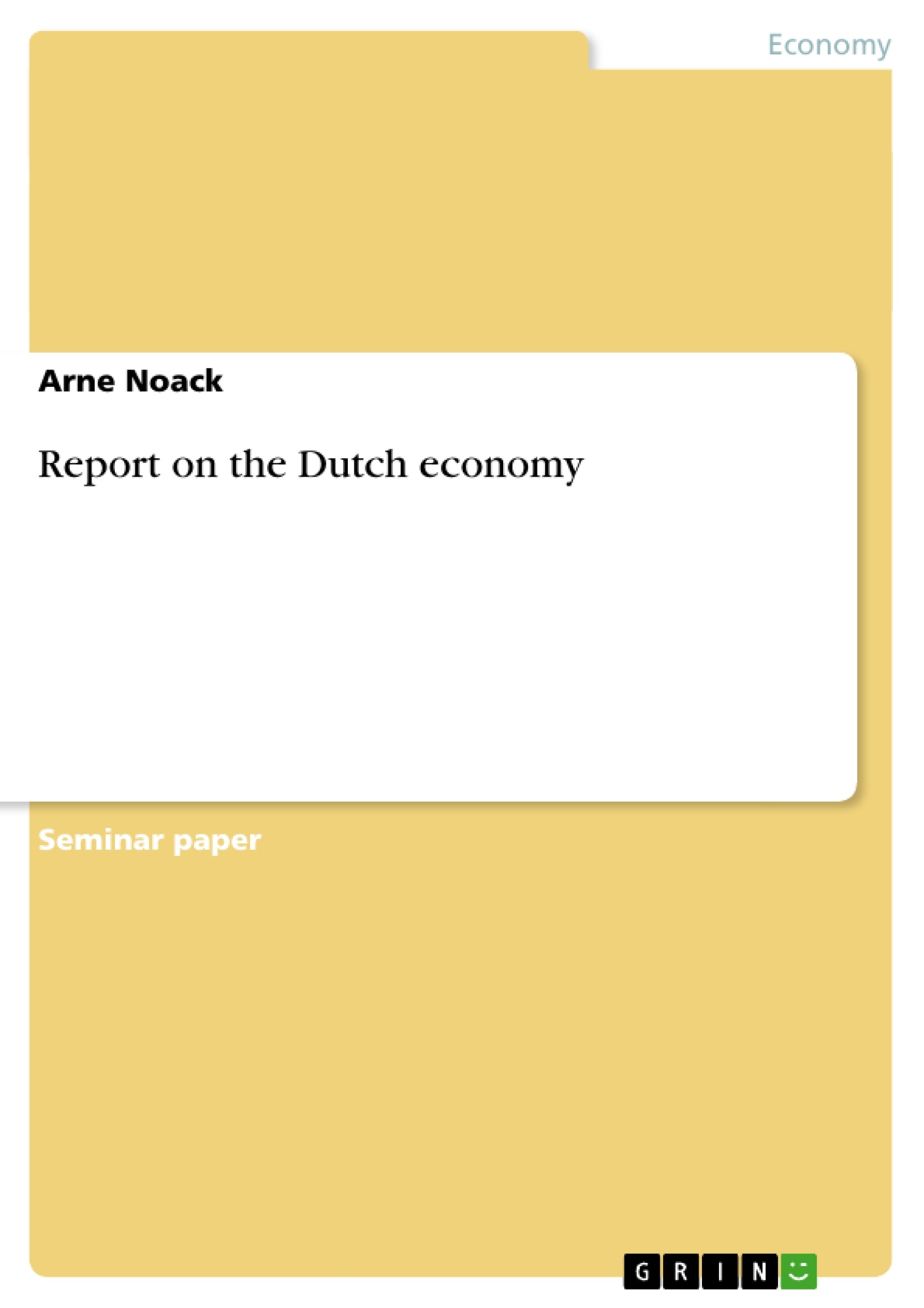The Dutch empire had played a quite big role in the worlds politics and economics in the end
of the 18th and the beginning of the 19th century. The Netherlands held a prospering empire
with flourishing trade. With the beginning of the Industrialisation the Netherlands fell back in
international competitiveness. The Dutch economy experienced a great boom 1945 after the
second world war on the base of chemical and Electro-Industry. However the development of
the Netherlands differed from most European countries.
This essay intends to describe the Dutch economy during the 1990 to the millennium.
What production of goods is it specialised on and how is this production process organised? Is
this economy able to address the needs of the Dutch population or is there even a lack of some
goods?
The following report tries to find answers to these questions by highlighting specific attributes
of the Dutch economy. By describing the development of the past decade it might be possible
to give a brief forecast on the Netherlands’ level of prosperity for the forthcoming five years
in the end of this essay. The Netherlands are located in the West of Europe. Compared to the rest of the world, the
area of the Netherlands is relatively small with only 41 526 km2 , which means it takes ranks
no. 132 in the world scale. Nevertheless the inhabitants are relatively numerous with 16.1
million people in 2002. This creates a high population density of 386 inhabitants per km2.
As pointed out in the essay this fact creates a good market for the Dutch economy.
The neighbours are Belgium in the South and Germany in the East. The North Sea is located
on the Northwest coast of the country.
The Dutch capital is the Amsterdam, while the seat of the government is located in the city of
Den Haag. [...]
Inhaltsverzeichnis (Table of Contents)
- Introduction
- General Information about the country
- Structure of the economy
- Short description of the Dutch economy
- Facts and Figures
- Trade
- Deficits of the Dutch economy
- economic development
- statistical development since 1998
- a forecast on future development
Zielsetzung und Themenschwerpunkte (Objectives and Key Themes)
This essay aims to provide a comprehensive overview of the Dutch economy during the period from 1990 to the millennium. It explores the country's specialization in goods production, the organization of the production process, and the economy's ability to meet the needs of the Dutch population. The essay further examines the development of the Dutch economy over the past decade and attempts to forecast its future prosperity for the following five years.
- Structure and Performance of the Dutch Economy
- Importance of Trade for the Dutch Economy
- Economic Development and Future Prospects
- Role of the Netherlands as a European Transportation Hub
- Openness of the Dutch Economy
Zusammenfassung der Kapitel (Chapter Summaries)
- Introduction: This section introduces the historical context of the Dutch economy, highlighting its decline in international competitiveness following the Industrial Revolution and its subsequent boom after World War II. The essay sets out to analyze the Dutch economy during the 1990s and the early 2000s, focusing on its structure, performance, and future prospects.
- Structure of the Economy: This chapter delves into the characteristics of the Dutch economy, including its stable industrial relations, moderate inflation, and significant role as a European transportation hub. It also emphasizes the country's high standard of living, evident in its high GDP per capita and ranking in the United Nations development index. The chapter further discusses the openness of the Dutch economy, with a high percentage of foreign investment and Dutch investments in companies abroad.
Schlüsselwörter (Keywords)
Key terms and concepts central to the analysis of the Dutch economy include its structure, performance, trade, economic development, transportation hub, openness, and foreign investment. The essay explores the country's specialization in goods production, the organization of the production process, and its ability to meet the needs of the Dutch population. The analysis also encompasses the country's economic performance, including GDP, inflation, and unemployment rates, as well as its trade relationships with other countries. Finally, the essay examines the future prospects of the Dutch economy, considering factors such as its ongoing economic development and its role in the European Union.
- Quote paper
- Arne Noack (Author), 2003, Report on the Dutch economy, Munich, GRIN Verlag, https://www.grin.com/document/17772



